|
One of the
most storied squadrons of the war was VA-195, which participated in
strikes against two of the more famous targets in Korea. In March-April
1951, VA-195 staged repeated attacks against two rail bridges in North
Korea in what was known as the "Battle of Carlson’s Canyon," in honor of
the squadron’s skipper, LCDR Harold G. "Swede" Carlson. On 1 May 1951, the
squadron launched on one of the more unusual missions of the war, staging
a torpedo attack against the gates of the Hwachon Dam. The success of the
mission prompted the squadron to adopt the nickname "Dambusters," which
its successor retains to this
day. |
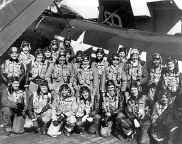 |
|
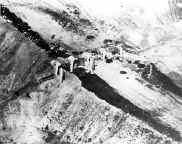 |
|
Sporting a
variety of flight helmets and various lengths of facial hair, the pilots
of VA-195 pose for the camera in front of one of their beloved AD
Skyraiders. |
|
"Carlson’s
Canyon" after being worked over by Navy aircraft for the final
time. |
| Click On Photographs To Enlarge
| |
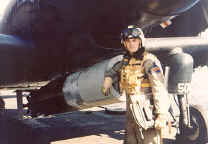 |
|
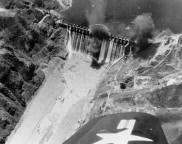 |
|
ENS R.E.
Bennett leans against one of the torpedoes used to knock out the Hwachon
Dam on 1 May 1951. |
|
Water pours
down the face of the Hwachon Dam during a torpedo attack by AD
Skyraiders of VA-195. |
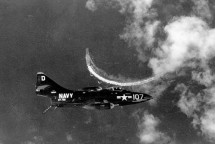 |
|
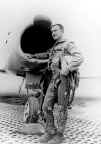 |
|
With hook down, an F9F-5 Panther of
VF-781 circles high above USS Oriskany (CVA-34) prior to recovery
aboard the ship. |
|
Though the
U.S. Air Force bore the brunt of the battles against enemy MiG-15
fighters, naval aviators achieved some milestones in air-to-air combat
during the Korean War. Major John F. Bolt, an ace while serving with the
famed VMF-214 "Black Sheep" during World War II, achieved six kills while
on exchange duty with the U.S. Air Force in Korea. In so doing, Bolt
became the only naval aviator to become an ace in two wars and the Marine
Corps’ only jet ace.
|
| Click On Photographs To Enlarge | |
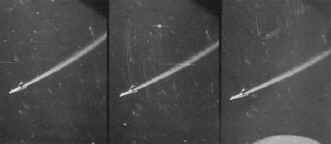 |
|
On 18
November 1952, three F9F-5 Panthers of VF-781 off the carrier USS
Oriskany (CVA-34) intercepted seven Soviet MiG-15 fighters while
operating 100 miles from the giant Russian naval bases at Vladivostok. In
one of the epic small engagements between the Soviet Union and United
States during the Cold War, the outgunned Navy fighters shot down at least
two enemy "bandits" and damaged a third. In this photograph, a Soviet
MiG-15 trails smoke after being hit by 20-millimeter cannon
fire. |

